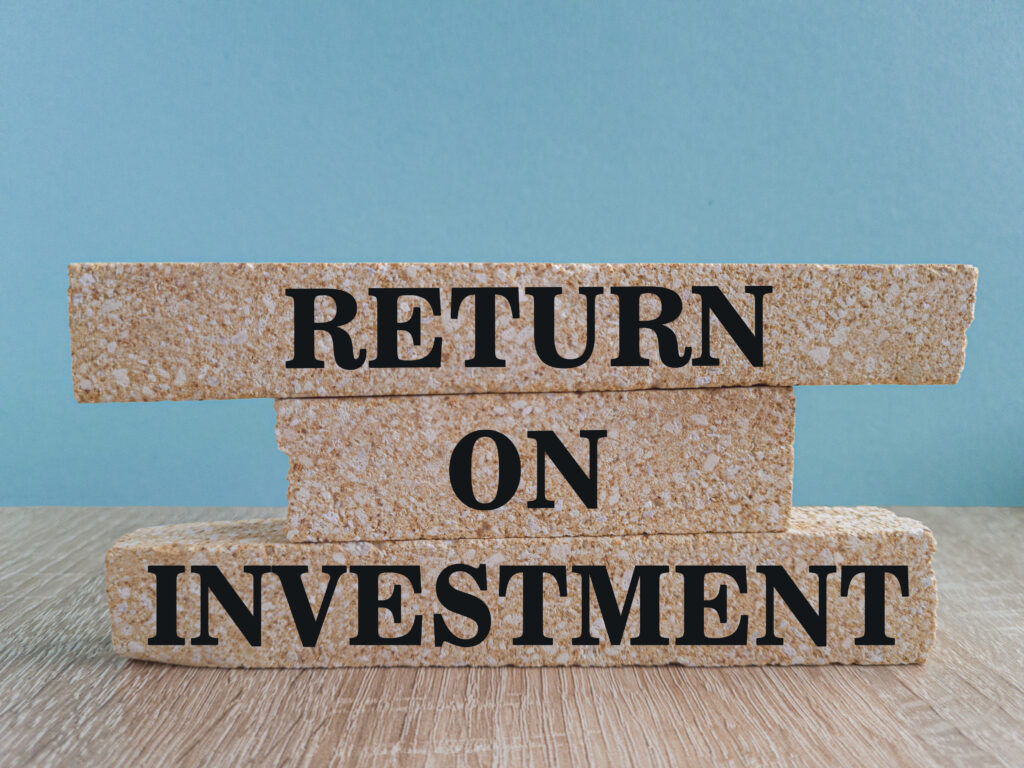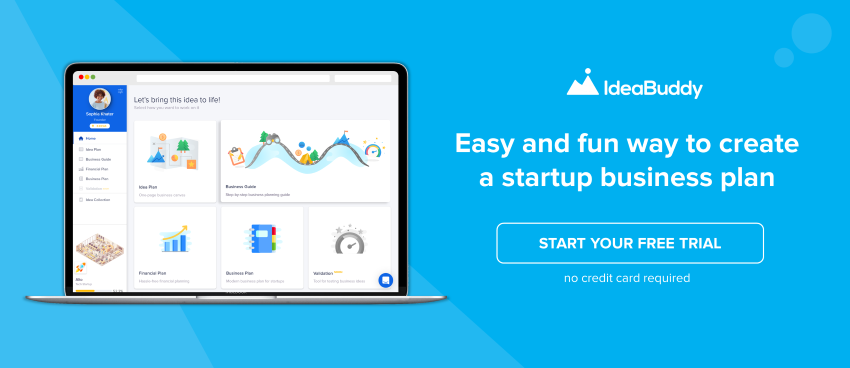When you successfully complete the previous stages of startup development, only then you can move to the next one. And like in video games, in order to move forward, you will have to become more skilled, plan ahead and arm yourself with patience and perseverance.
To put it simply – all startups, big and small, evolve through the five different stages, which are inevitable on the journey of building a successful business.
Today, we will examine these five stages and deep dive into each of them. After reading this article, you will get a basic understanding of the five essential startup development stages and learn what to expect.
The most important startup stages
Here are the five major stages every startup will go through:
- Solving a market problem
- Testing the concept
- Finding product-market fit
- Scaling the business
- Maturity stage
Stage 1: Solving a market problem
What is the main reason you came up with your business idea? Usually, it is because there are people who want your products or services. This is a high-level answer though. The question then becomes why do they need you in the first place?
And the answer to this is simple – you are addressing a pain point they must be having. Solving a problem is the first and basic thing any business needs to do if they want to become successful and stay relevant. Therefore, the first step in developing your business ideas is to identify a market problem you can solve – and examine it thoroughly.
How to find a solution?
After you figure out the problem, take a look at how you can solve it. Is your solution efficient? Does it consume a lot of resources – time, money, or energy? If the answer to the latter question is yes, then you might want to find a different approach to the problem – or a different problem to solve altogether. Remember, if you want to succeed, then you might not
But the process doesn’t stop once you find a solution that seems good. Instead, this is only the start. You will need to conduct initial market research, too. The main question you want to answer is how people will react to your solution. This is a good demand test – you will see if they will want to use your services or not. Talk to the people closest to you – your friends, family, etc. There will be a lot of interviews, so prepare for that! The main goal is to create an idea of your ideal client (your target). Along with that, you will create the ideal product for development, and with it – you will be able to move to the next step.
Stage 2: Testing the concept
After you come up with your solution and the ideal target, you will want to test how everything will work out. The metric you will want to follow here is the MVP – Minimum Viable Product.
If you want your business not only to survive but to thrive in today’s business environment, then you will want to have as little risk as possible. This means that you are using minimal capital and time for your service while achieving the profit that will keep you growing.
You will have to adjust this as you go. MVP serves to test the demand for your solution, and how profitable your operation is.
In order to achieve this, though, you will need to attract some initial clients. This is where you examine just how long they stay with you. If they are enjoying your services, they will keep coming back again and again.
If not, you will need to change and adapt. Consider what pushed them away, and try to correct it. You will need to use this to pick your MVP in a smart way. Sadly, there is no one solution here – MVPs differ from company to company.
How to determine an MVP?
However, by interviewing people, you might get a good feel of what your MVP can be. The interviewees can be an amazing generator for ideas. Use what they say to shape up a product or a service which will stand out from your competitors.
At the end of the process, you will want to have a clear value proposition statement. It should go along the lines of “This is our ideal buyer. This is the problem they have. Our solutions help in this way, and this is how they differ from our competition.” Once you do that, you can test how your product will fit the market.
Stage 3: Finding a product-market fit
After you’ve completed the previous two startup stages, and entered the third one, you should finally see your business come alive. By now, you have set up a good foundation. All that remains now is to build up and expand, drawing more and more people in.
This is called finding your product-market fit. At this point, there are two things that you will want to look into more closely. It is the retention rate and the return on investment (ROI).
Retention will show you just how many people are sticking with you and what you have to offer. If at least 40% of people say that they couldn’t live without your business after using your services, then you should be good to go.
This means that you have created a strong base, and from there, you can market your business to expand your client base. What’s more, if you aim to create something people will talk about, then your base will expand naturally through personal recommendations. This is a great proof of a successful product-market fit.
ROI as a major KPI of a product-market fit
ROI, or return on investment, is an even more precise marker of a good product-market fit. Along with that, it is one of the most commonly used profitability ratios.

While you can determine your ROI through multiple ways, you will usually divide your net profit by the total assets. What you get should be a number between 1 and 100 (or 0 and 1), which gives you your ROI in percentage. If you are achieving a good product-market fit, this number will be positive. If not, you will need to work harder on your business and figure out what you’re doing wrong.
However, don’t confuse it with the profit you’re making. ROI tells you how much money you are investing in your business, and the return you get from that money – bakes on the net profit. As such, you can use ROI for multiple things – and we encourage you to explore it further.
Talk to the people
During these steps, you will also want to venture out – and talk to your clients. Make a lot of surveys, because you are going to need a lot of data. Try to figure out how your clients feel about your product, and from there, gauge how well it will fit the market you are working in. What’s more, look at the customer acquisition cost, customer lifetime value, and customer churn rate.
At this point, you should also be working on your funnel optimization. Try to test things around and see what will bring the biggest number of clients. Look into the clients themselves – are there any groups particularly interested in your business?
What traits do people that stay with you have that others don’t? When you are only starting a business, you should focus only on one niche. This gives you expertise and footing in it before you move into the new startup stages and start expanding further.
Stage 4: Scaling the business
When you are entering the scaling stage, your business already has a good client base that you are working with. Now, you might already start that you are running out of time, or that you will need more hands-on deck in order to successfully run your operations.
However, in order to develop a successful business, you will need to be smart about how you will scale your team.
Finding the right people
In order to grow in a healthy way, you will want to bring specialists who know what they are doing. This might seem like a no-brainer to many, but there is a key thing to remember here. You will want to focus on the things that you found worked out during the product-market fit stage. Double down on these channels, and bring people with experience in them.
For example, if you are funneling a lot of people through your search engine optimization, then you will want to have people with experience in SEO to help. This way, you will be able to attract even more clients to your business, but venturing in the avenues which showed promise. The experimental stage is over (for now) – focus on the things you know are working when scaling your business.

There are two more things to remember here. You should not be pooling all your resources into a single channel. Hopefully, you have discovered a couple of very effective ones – and you will want to layer them together.
Through their combined work, you will be able to quickly crunch up amazing client numbers. The second thing to watch out for, though, is channel saturation. At some point, the clients a channel is bringing will die down. Instead of pushing it further, just switch it with a new channel – as you enter the maturity startup stage.
To conclude, you can look at the scaling stage as a speed-up version of the third stage. Here, we are speeding up customer acquisition while still monitoring the health of our KPIs, as our business reaches its maturity.
Stage 5: Maturity phase
It’s a tough thing – figuring out just when your business has reached maturity. But probably the best pointer would be when you start being completely satisfied with how your business has grown. However, remember never to stop exploring new avenues and growth opportunities. A business should never stagnate – because it will not stand still. If you let it be, then it will easily slow down and you will start losing both the clients and the profit.
Therefore, in this startup stage, you should start exploring new ways to offer value to your clients. You might open a new office at a new locale, and then change up the services you are offering based on the different cultures you find yourself in. You might open up new markets for yourself, reaching into a nearby niche and gaining new clients (but also offering similar services). At this point, you can also start experimenting with your grown channels again, and see if something new will drastically shape up your client base.
As you can see, there are many ideas you can test out – and we encourage you to think of unique ones too. After all, it is your ideas that will make your business stand out and draw attention.
. . .
5 Startup Stages: Conclusion
To conclude, having a vision and idea are very important for running a successful business – but they are only parts of its foundation. In order to really succeed in today’s world, you will need to go step by step in growing and strengthening your business. You should always think about the future but focus mainly on the step in which you find yourself today. This way, you will be effective in what you do, and you will not lose any time or money in your endeavors.
What’s more, by following these five startup stages, you will be able to solve any problems that appear on your business’s journey. Therefore, it is important for a startup to recognize which stage you are in. You need to go through each checkpoint one by one – there are no shortcuts. They are the only way through which you will get from an idea to a successful, longstanding business.





